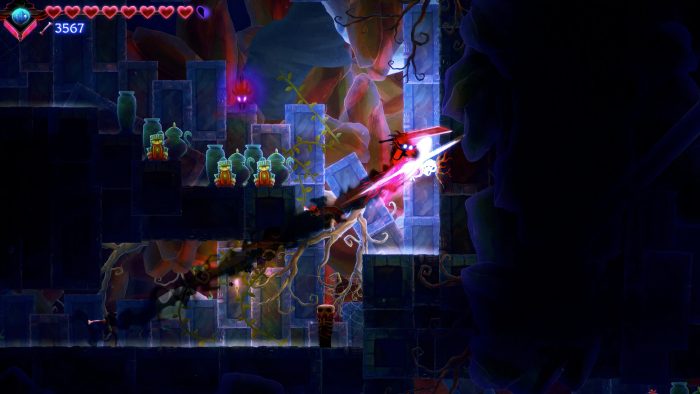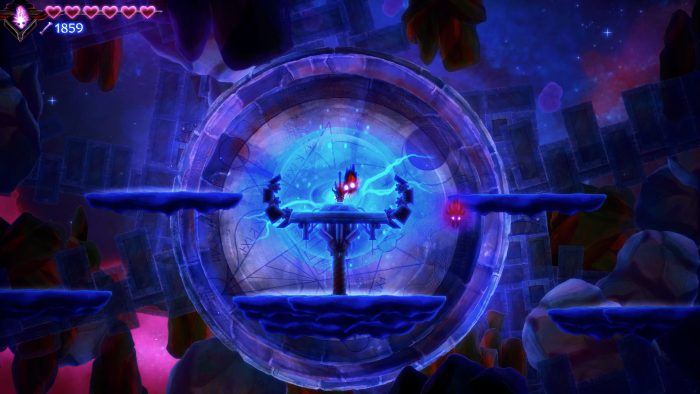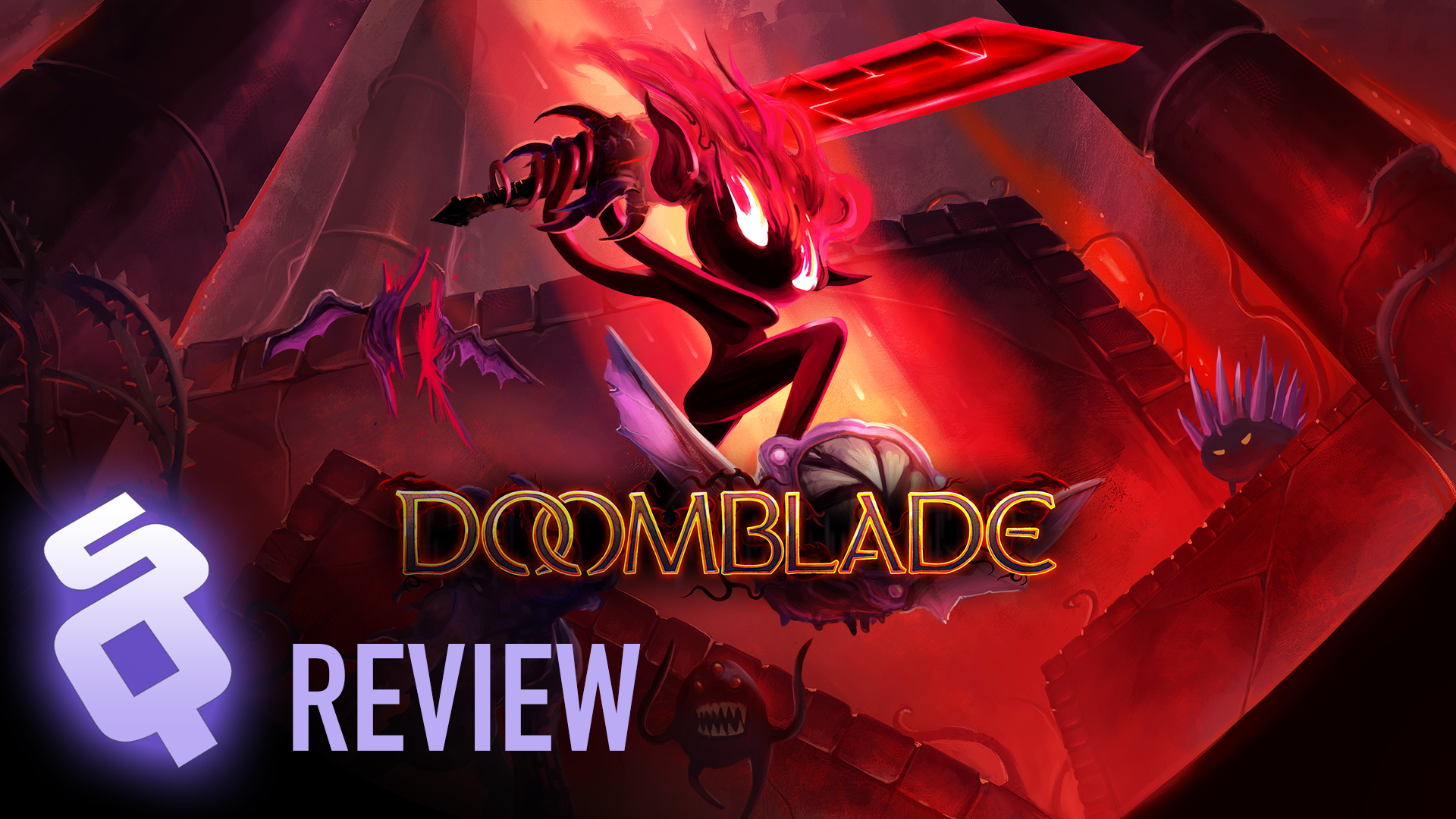Esoteric Metroidvania with a movement twist
Metroidvanias are a dime a dozen. Creating one that sticks out from the crowd is a challenging endeavor for any development studio. Solid gameplay is no longer a means to success. It’s become increasingly apparent for a title to succeed in the genre that every aspect has to be well crafted. Does Muro Studios’ Doomblade manage to pull this feat off or is it doomed to failure?
In Doomblade players take control of a silent, amorphous character named Doom Girl. She’s awoken from her sleep to the sounds of ominous whispering. A voice beckons her out from her little cave, leading her onwards to its source: a living sword, bound in chains by an elder race known as the Dread Lords. She frees the sword and sets out on a journey to reclaim its lost powers, in an effort to overthrow the evil dictators that have brought ruin to the world.
Immediately upon acquiring the talking weapon Doom Girl is ambushed by a wave of enemies in a trial by fire tutorial, one that highlights how this game is very different from others in the genre. Both the combat and platforming are inspired by twin-stick shooters; we move with the left analogue stick and target enemies and objects with the right. Once targeted, tapping the attack button sends Doom Girl and the blade towards an enemy. This is not only our primary mode of attack but also our movement, as most of the time jumps are inadequate to reach higher areas. The blade’s homing attack is how we move 80% of the time.

Moving from enemy to enemy, object to object is a thrilling and unique experience. It’s just a shame how unreliable it all feels. The issue is due to inconsistent targeting. I’ve noticed on multiple occasions where the lock on icon will take a few seconds to appear despite there being nothing else to lock on to. This is made even worse when what feels like an innumerable amount of targetable items are on the screen. There’s even a context sensitive movement feature whereby holding the attack button will have us dash through the targeted enemy and instead attacking what lies beyond, which always feels like hit or miss on if it would work. This frequently leads to accidentally hitting enemies or environmental hazards that damage us. Many of these issues crop up with other gameplay mechanics that rely on pinpoint accuracy for movement. All of this makes playing the game feel like an experience that is unnecessarily harder than it was meant to be.
The controls, as unreliable as they were, don’t get in the way of my desire to use them to explore the world. Doomblade is the rare example of a Metroidvania where the world both feels unique and varied, but where each biome organically serves the gameplay and story. The New Wilderwood is a jungle biome whose native tribe is themed after the Mayans and Aztecs, and who are untrusting to outsiders; this is highlighted in how they are always pointing their shields towards Doom Girl, which forced us to attack the shields to create makeshift trampolines to get to unreachable locations. The Power Sector is a large, industrialized military complex whose theme is electricity, and it is here we acquire an electrical projectile to activate or deactivate certain machines. One of the first areas in the game does a great job of showcasing a charming, if macabre sense of humor. If one ever wondered what cute, sentient cannibalistic mushrooms would be like this game has the answer.

The enjoyment found in exploring the world is also benefited by a deliberately ambiguous story that draws inspiration from the Lovecraftian approach to narrative. We are never spoon fed information, but instead details of the world are revealed through lore stones, the musings of the Doomblade, or occasionally interacting with NPCs. “Esoteric” has become somewhat of a buzzword but it definitely is appropriate here, as the secrets of the past are never fully explained, making the player wonder if they are doing the right thing and what the consequences will be. Of the four endings available to the player there is one in particular that made us shocked by what we had caused.
Visually, Doomblade is a treat on the eyes. It has a unique art style that carries its identity into every place we visit, while still managing to let each environment have their own unique theme. The absolute best thing about the game, however, is the music. It hits hard but never feels over the top, understanding what tracks work best in a situation.
There’s a lot to love about Doomblade. It has a mysterious, compelling story and world; the dark humor is strangely charming; the visual and music aesthetics are quite excellent. But the minute to minute gameplay, as unique as it is, just never feels refined enough to raise the game above mediocrity. Where it truly counts, Doomblade can’t stand out from the crowd.
This review is based on a Steam code sent to SideQuesting by the publisher. Images and video courtesy Iceberg Interactive and Muro Studios.



No Comments